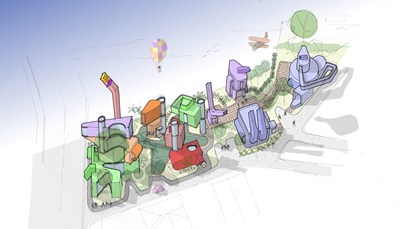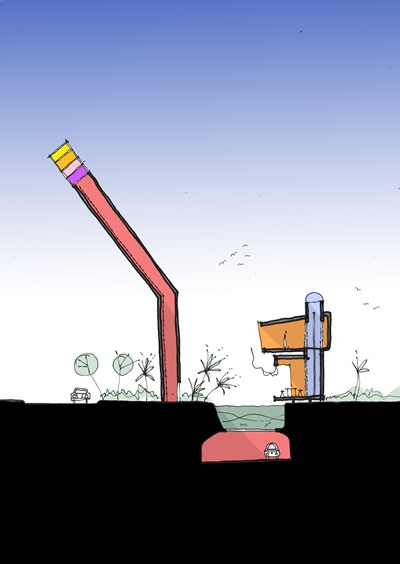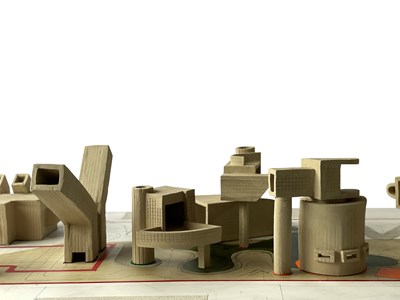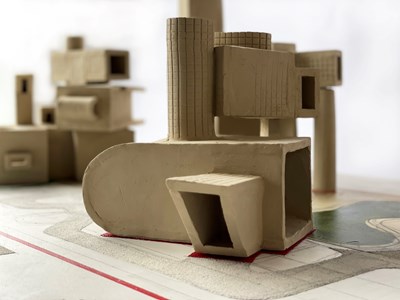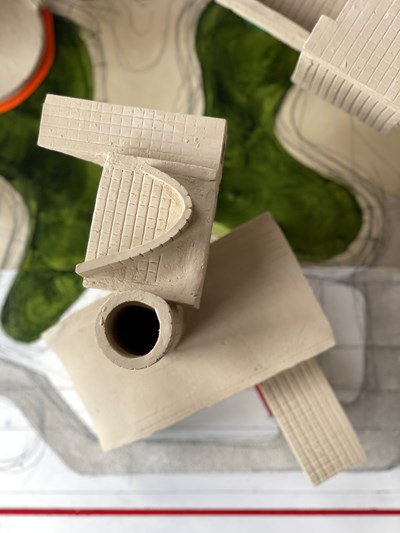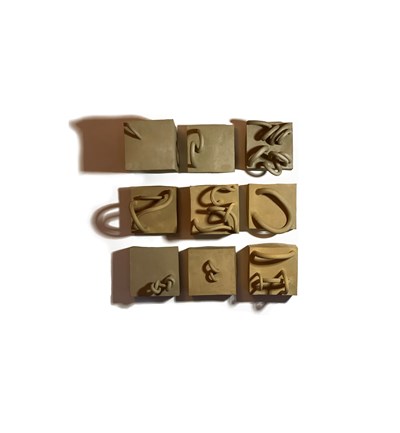Maggie Hubert from Waipapa Taumata Rau, the University of Auckland School of Architecture and Planning, is a finalist for her project 'The Ineffable Life'.
Project description
This project offers a tribute to deep friendship and the incongruous places it is found. It asks what an architecture capable of cultivating affection, and indeed prolonging accord in the face of life’s finitude, might be. As an artist prior to studying architecture, I had found my way to two special people: José Bribiesca and Paul Hartigan—both artists/storytellers who generously shared their unique grasp on the world with me over time. This project seeks to make sense of this generosity. It is a tribute to the interstitial place and time of our rapport, but also, a kind of mirror-portraiture addressed to the future.
While the contingencies of life coloured our togetherness with concern, affection, and sadly passing in José case, I turned to ceramic media to better investigate and experiment with architectural themes I felt subsisted with both artists' work and our relating. Clay, with its capacity for malleable and impressionable reworking, spoke to me of memory—fragile at first but robust upon firing. My reworking of clay by hand offered a surrogate kind of record-making and suggested a 'field of memories' could be carried, allegorically, by architectural vignettes.
On a plot of land in West Auckland recently purchased with my partner for a future house, I set about composing a speculative architecture addressing ways for sharing and extending affectionate connection. Various built forms were conceived to imaginatively house the personal and creative dimensions of José and Paul’s lives along with how these might intertwine with those I wished for myself. To this end the project plays complexly with distance and togetherness, concealment and exposure, sharing and waiting, testing how the fragile, ineffable qualities of affection might be embodied, narrated and prolonged spatially, formally, materially.
Jury citation
The ways in which architecture can facilitate relationships, conversation and dialogue is the concern of this deeply personal project, which is a tribute to the designer’s friendships with two artists. How can a room, building or site contain or express the care, affection and intangible connections forged by friendship? What role can it play in housing memory and love long after its inhabitants are gone?
Maggie’s use of drawings and clay models to lovingly evoke two important relationships has resulted in a beautiful scheme imbued with care and aroha. A talented crafter of emotive spaces, she has woven a dialogue between, across and within a permeable series of studios, shared spaces and public-facing areas that comprise an ode to the life of the artist.
Jewel-like in its colour, refinement and detail, this project is both a celebration and an elegiac memorial. Its forms and functions have great potential as a blueprint for a community hub, artist residence or artist-run space, and is a compelling vision for a more empathetic architecture.





